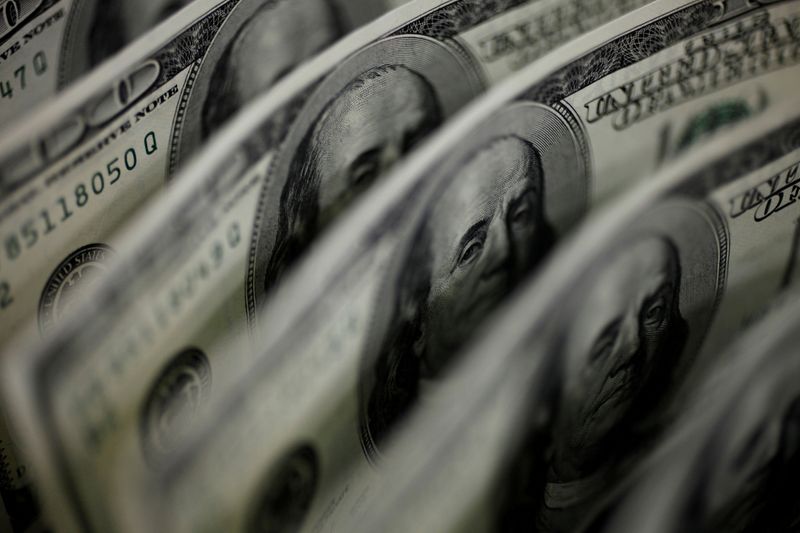Dollar edges lower as investors favor higher-risk currencies

NEW YORK (Reuters) – The dollar lost ground on Friday as market participants favored currencies associated with risk-on sentiment over the safe-haven greenback.
Risk appetite was stoked by better-than-expected economic data and expectations that U.S. President Joe Biden’s proposed $1.9 trillion coronavirus relief package will come to fruition.
“The dollar’s down against other currencies but not by a whole lot,” said Oliver Pursche, president of Bronson Meadows Capital Management in Fairfield, Connecticut. “I expect the dollar to be where it is now at the end of the year, and the main reason for that is while I see some signs of improvement in the economy, monetary policy is going to stay where it is.”
“I don’t think the dollar is underpriced or overpriced,” Pursche added.
For the week, the dollar slid about 0.2% against a basket of world currencies, the euro was essentially flat, and the yen lost more than 0.5%. But the British pound advanced more than 1.1% against the dollar, its best week since mid-December.
Bitcoin continues soar to record highs. The world’s largest cryptocurrency was last up 6.6% at $54,961.67, hitting $1 trillion in market capitalization.
Its smaller rival, ethereum, was last up 0.7% at $1,953.28.
The digital currencies have gained about 89% and 1,420%, respectively, year to date, leading some analysts to warn of a speculative bubble.
“One concern I’ve always had (about cryptocurrencies) is how susceptible they are to manipulation,” Pursche said. “But they’re going to continue to gain legitimacy.”
“While it’s great that Tesla made an investment in bitcoin, I’m more intrigued by Blackrock and other major investment firms taking a hard look at cryptocurrencies as a viable investment.”
The Australian dollar, which is closely linked to commodity prices and the outlook for global growth, was last up 1.21% at $0.7863, touching its highest since March 2018.
The New Zealand dollar also gained, closing in on a more than two-year high, and the Canadian dollar advanced as well.
Sterling, which often benefits from increased risk appetite, rose to an almost three-year high amid Britain’s aggressive vaccination program. It had last gained 0.27% to $1.40.
The euro showed little reaction to a slowdown in factory activity indicated by purchasing manager index data, rising 0.21% to $1.2116.
The yen, gained ground against the dollar and was last at 105.495, creeping above its 200-day moving average for the first time in three days.
(Reporting by Stephen Culp, additonal reporting by Tommy Wilkes; editing by Jonathan Oatis)
































comments